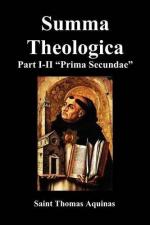Obj. 4: Further, the tabernacle or temple was ordained to the worship of God. But in God we should worship above all His unity and simplicity. Therefore it seems unbecoming for the tabernacle or temple to be divided by means of veils.
Obj. 5: Further, the power of the First Mover, i.e. God, appears first of all in the east, for it is in that quarter that the first movement begins. But the tabernacle was set up for the worship of God. Therefore it should have been built so as to point to the east rather than the west.
Obj. 6: Further, the Lord commanded (Ex. 20:4) that they should “not make . . . a graven thing, nor the likeness of anything.” It was therefore unfitting for graven images of the cherubim to be set up in the tabernacle or temple. In like manner, the ark, the propitiatory, the candlestick, the table, the two altars, seem to have been placed there without reasonable cause.
Obj. 7: Further, the Lord commanded (Ex. 20:24): “You shall make an altar of earth unto Me”: and again (Ex. 20:26): “Thou shalt not go up by steps unto My altar.” It was therefore unfitting that subsequently they should be commanded to make an altar of wood laid over with gold or brass; and of such a height that it was impossible to go up to it except by steps. For it is written (Ex. 27:1, 2): “Thou shalt make also an altar of setim wood, which shall be five cubits long, and as many broad . . . and three cubits high . . . and thou shalt cover it with brass”: and (Ex. 30:1, 3): “Thou shalt make . . . an altar to burn incense, of setim wood . . . and thou shalt overlay it with the purest gold.”
Obj. 8: Further, in God’s works nothing should be superfluous; for not even in the works of nature is anything superfluous to be found. But one cover suffices for one tabernacle or house. Therefore it was unbecoming to furnish the tabernacle with many coverings, viz. curtains, curtains of goats’ hair, rams’ skins dyed red, and violet-colored skins (Ex. 26).
Objection 9: Further, exterior consecration signifies interior holiness, the subject of which is the soul. It was therefore unsuitable for the tabernacle and its vessels to be consecrated, since they were inanimate things.
Objection 10: Further, it is written (Ps. 33:2): “I will bless the Lord at all times, His praise shall always be in my mouth.” But the solemn festivals were instituted for the praise of God. Therefore it was not fitting that certain days should be fixed for keeping solemn festivals; so that it seems that there was no suitable cause for the ceremonies relating to holy things.
On the contrary, The Apostle says (Heb. 8:4) that those who “offer gifts according to the law . . . serve unto the example and shadow of heavenly things. As it was answered to Moses, when he was to finish the tabernacle: See, says He, that thou make all things according to the pattern which was shown thee on the mount.” But that is most reasonable, which presents a likeness to heavenly things. Therefore the ceremonies relating to holy things had a reasonable cause.




